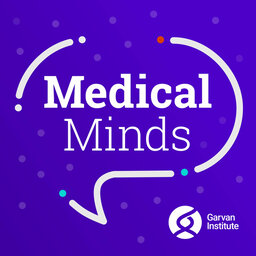Breaking down cancer's defence mechanisms
The human body has an incredible capacity to heal itself – whether it’s a paper cut, a broken bone, or your lungs recovering after a chest infection. But not all types of healing are good for us. Cancers seem to have hijacked the healing process to protect themselves from treatments and to spread more easily around the body. In this episode, we speak to Associate Professor Thomas Cox, who is working to put a stop to this and make existing cancer therapy more effective.
 Medical Minds
Medical Minds


